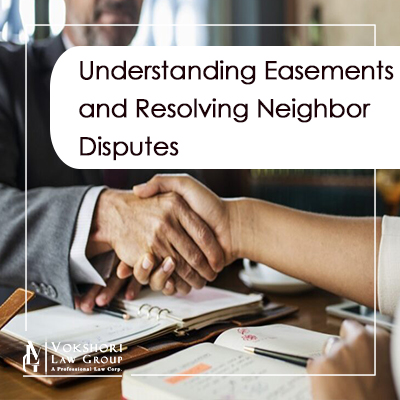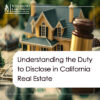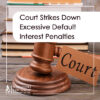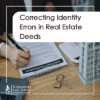
The old American adage is “good fences make good neighbors,” but at times there are property boundary disputes between neighbors when the fence does not track the actual property boundary. When these conflicts occur, understanding the legal nuances of property rights becomes essential. Here’s a clearer look into adverse possession, prescriptive easements, equitable easements, and how disputes, especially those involving trees, are managed.
Adverse Possession: A Rare Occurrence
First year law students are often surprised when they learn that if a “squatter” occupies land in a manner that is (1) under a claim of right, (2) actual, open and notorious giving reasonable notice to the true owner, (3) hostile to the true owner, (4) continuous for a period of at least five years and (5) payment of property taxes on that land for the same five year period, that trespasser invader may claim title to that land by adverse possession.
However, in practice, it’s rare that the true property owner would not take any action to remove this trespasser for five years while knowing of the trespass. But more to the point, a trespasser virtually never pays property taxes on the land he is “squatting” in and claiming the right to for the five (5) year period. This essentially means that, in most cases, adverse possession is a dead letter in California and very rarely enforceable.
Prescriptive Easements: Shared Use Rather Than Ownership
Prescriptive easements often come into play in boundary disputes, allowing someone the right to use land without owning it. The elements for a prescriptive easement mirror those of adverse possession, but do not require payment of taxes on the claimed easement in the land. Again, it requires use for five (5) years that is (1) under a claim of right, (2) actual, open and notorious giving reasonable notice to the true owner, (3) hostile to the true owner and (4) continuous for a period of at least five years.
Unlike adverse possession, a prescriptive easement doesn’t require the payment of taxes and is usually established when the use of land is shared with the true owner, rather than exclusive. For example, using a pathway across a neighbor’s land openly and continuously for five years may establish a prescriptive easement, provided it’s done without the owner’s explicit permission.
In prescriptive easement, if the claimed prescriptive easement is enclosed so that only the claimant can use it, not the true title owner, then a prescriptive easement cannot arise. Silacci v. Abramson (1996) 45 Cal.App.4th 558 [holding where claimant to a prescriptive easement’s use of the easement has been exclusive rather than shared, a prescriptive easement cannot arise as prescriptive easements only confer right of use rather than ownership of the easement].
Another common way landowners seek to stop any claimant from asserting a prescriptive easement is by posting notices that right of passage is by permission of the landowner only and may be revoked at any time. This helps show that anyone passing by is by right of permission of the true owner, rather than hostile to the true owner (a necessary element to claim a prescriptive easement). If a landowner knows that a neighbor is passing through his land and may claim a prescriptive easement after 5 years, before expiration of that period he may seek to defeat the future prescriptive easement by posting notices that right of passage is permissive or by fencing off the land as well to prohibit neighbor passage.
Equitable Easements: Balancing Hardships
Equitable easements are created by the court to address situations where strictly applying the law would result in undue hardship. For instance, if a neighbor inadvertently builds a structure on your property, the court may grant them an equitable easement if removing the structure would cause significant difficulty. This decision is based on balancing the hardships faced by both parties, ensuring a fair outcome.
In the case of Hirschfield v. Schwartz (2001) 91 Cal.App.4th 749, the Schwartzes built substantial improvements on land that was actually owned by their neighbors the Hirschfields: waterfalls, a koy pond and stone deck, and a putting green and sand trap. When these improvements were done, the boundary between the neighbors was not clear. A car careened through the Schwartzes’ front yard, so they further erected a substantial concrete and rebar block wall to protect their children while playing.
Significantly later, the Hirschfields had a survey done and saw that the Schwartzes’ improvements were on their land. The Hirschfields filed suit to quiet title to their land, and the Schwartzes countersued seeking a prescriptive or “other” type of easement.
The California Court of Appeal found that the Schwartzes could not claim a prescriptive easement because their improvements and use on this land was exclusive—the Hirschfields were not permitted onto these improvements. Rather, the Court found the Schwartzes had an equitable easement by balancing the hardships to each neighbor. The Court found that it would be a substantial hardship to the Schwartzes to have to raze and haul out all improvements. The judicially created equitable easement (1) required the Schwartzes to pay the fair market value of the claimed easement land and (2) only lasted as long as the Schwartzes owned their property, and would expire upon abandonment or sale of their property.
Trees and Boundary Disputes
Another common point of contention between neighbors are trees, whose branches and roots may spread and intrude upon the property of neighbors. (If a tree is growing on the property line, it is owned by both neighbors.)
If a fruiting tree’s branches grow over the property boundary, the fruit is still rightfully harvested by the landowner owning the land from where the tree is growing. The neighbor with the fruit-laden overhanging branches may not harvest that fruit, but may collect it if it falls to that neighbor’s ground.
California law allows a landowner to cut back encroaching branches coming over the fence onto his land, but that landowner must be careful not to kill or injure the tree and must act “reasonably” in doing so. He may only cut the branches back to the property line. It is recommended that an arborist be used for the branch trimming. If the tree is killed or seriously injured, the cutting landowner is responsible to his neighbor for resulting damages to the tree and to the property it is on.
Final Thoughts
Navigating neighbor disputes requires a thorough understanding of property rights, including adverse possession, prescriptive and equitable easements, and the careful handling of shared natural resources like trees. In resolving these disputes, the aim should always be to maintain amicable relations while protecting your property rights. If you find yourself in a boundary dispute, consulting with a legal professional can provide clarity and help you find a resolution that respects the rights and interests of all parties involved.






